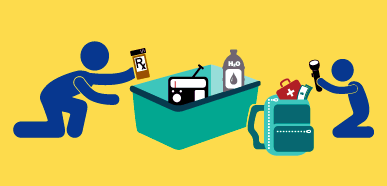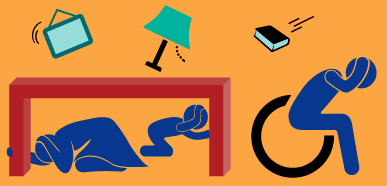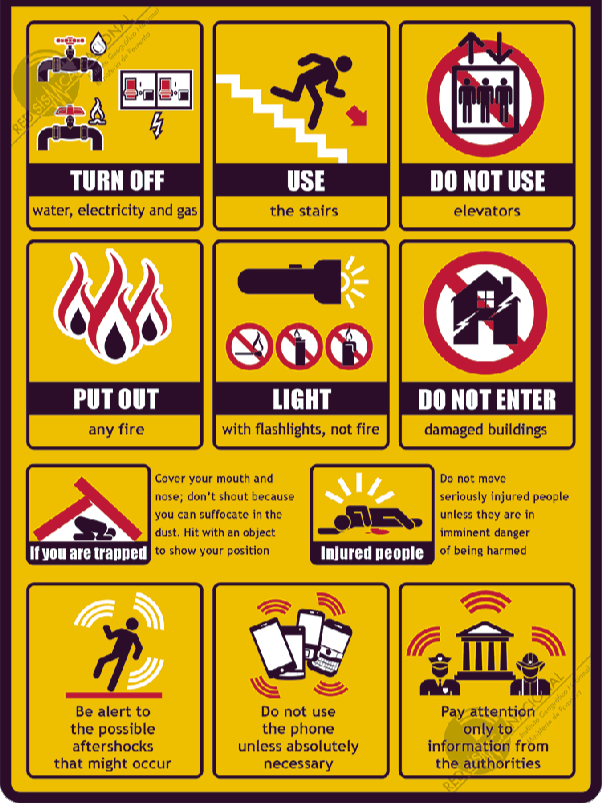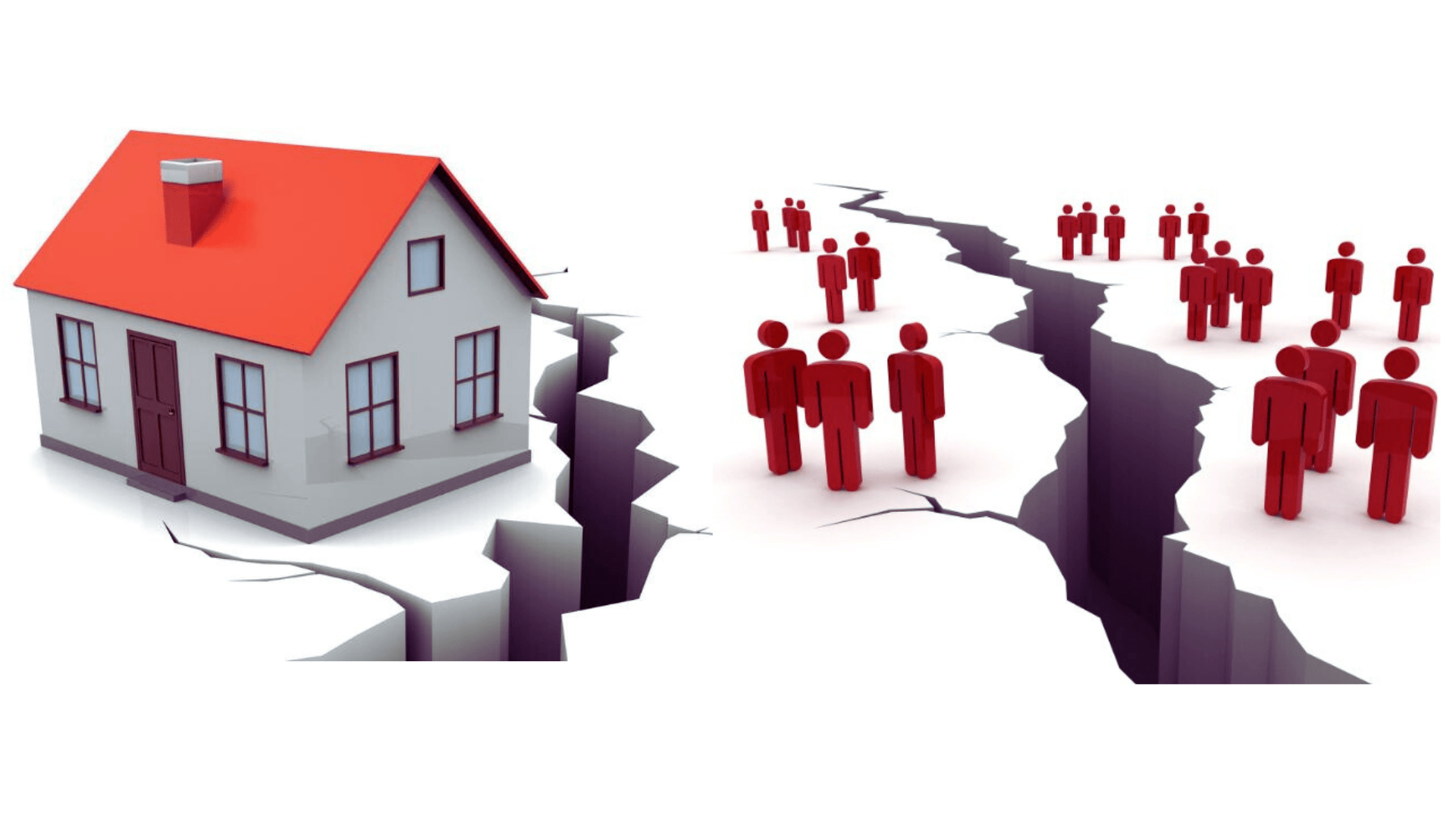Introduction
Earthquakes are natural disasters characterized by the sudden, violent shaking of the ground, often resulting from the movement of the Earth’s tectonic plates. These events can strike without warning, leading to significant damage to infrastructure, injuries, and loss of life. The unpredictable nature of earthquakes underscores the critical importance of preparedness. By understanding what to do before, during, and after an earthquake, individuals and communities can significantly reduce the risks associated with these disasters. Planning, preparedness, and practice are key components in mitigating the impacts of earthquakes, making it essential for everyone to familiarize themselves with safety measures and response procedures. This knowledge not only helps in protecting oneself but also in assisting others during and after an earthquake, thereby fostering a resilient community.
Before the Earthquake: Preparation

Preparing your home and family for an earthquake involves several crucial steps to ensure safety and minimize damage:
- Secure Heavy Furniture and Appliances: Fasten heavy furniture such as bookcases, shelves, and large appliances to wall studs to prevent tipping. Use flexible straps that allow slight movement without causing the furniture to fall over.
- Emergency Kit: Assemble an emergency kit that includes water, non-perishable food, a flashlight, batteries, a first aid kit, medications, and personal hygiene items. Remember to consider the needs of all family members, including pets.
- Identify Safe Spots: Educate family members about safe places in each room, such as under sturdy furniture or against an interior wall away from windows, where they can drop, cover, and hold on during the shaking.
- Practice Earthquake Drills: Regularly conduct earthquake drills with your family to ensure everyone knows what to do when an earthquake occurs.
- Create a Communication Plan: Establish a family emergency communication plan. Decide on a meeting place outside of your home in case of separation and choose an out-of-area contact everyone can call to check-in.
- Review Insurance Policies: Ensure your home is covered for earthquake damage, as many standard policies do not include earthquake coverage.
By taking these preparatory steps, you can significantly reduce the risks to your home and loved ones when an earthquake strikes.
During the Earthquake: Immediate Actions

During an earthquake, your immediate actions can significantly impact your safety. Here’s what to do:
If You Are Indoors:
- Drop, Cover, and Hold On: Quickly drop to the ground, take cover under a sturdy piece of furniture or against an interior wall, and hold on until the shaking stops.
- Cover Your Neck and Head: Use one hand to protect your neck and head from falling debris and broken glass.
- Stay Away From Windows: Glass can shatter, causing injuries, so move away from windows and exterior walls.
- Do Not Use Elevators: Elevators may malfunction during an earthquake. Use stairs if necessary once the shaking has stopped.
If You Are Outdoors:
- Move to a Clear Area: If possible, move to an open area away from buildings, trees, streetlights, and utility wires that may fall.
- Drop, Cover, and Hold On: If moving to an open area is not possible, drop to the ground and protect your head and neck with your arms.
General Advice:
- Expect Aftershocks: Be prepared to drop, cover, and hold on during aftershocks, which can occur minutes, days, or even months after the main quake.
- Do Not Exit Buildings During Shaking: Exiting can expose you to falling debris. Stay inside until the shaking stops and it is safe to go outside.
Following these guidelines can help protect you during an earthquake, regardless of your location at the time of the event.
After the Earthquake: Safety Procedures

After an earthquake, it’s crucial to act cautiously and follow specific safety procedures to ensure your well-being and that of those around you. Here are the essential steps to take:
- Check for Injuries: Before assisting others, ensure you’re not injured. Help those in need with first aid, and do not move severely injured individuals unless they are in immediate danger.
- Move to a Safe Location: Once the shaking stops, proceed to your predetermined outdoor meeting location. Avoid damaged areas that may be unsafe.
- Assess and Mitigate Hazards: Check for small fires and extinguish them if possible. Shut off gas, water, and electricity if you suspect leaks or damage to prevent further hazards.
- Be Cautious of Aftershocks: Aftershocks can follow the initial quake. Remain vigilant and ready to move to safety if necessary.
- Avoid Using the Telephone: Reserve phone lines for emergency calls to allow access for emergency responders and those in dire need.
- Evacuate if Necessary: Decide to evacuate based on the level of damage. Use caution when evacuating to avoid unstable structures and roads.
Remember, your actions can prevent further injuries and aid in a faster recovery for yourself and your community.
Long-term Preparedness
Ensuring long-term safety from earthquakes involves both individual and community efforts. Here are key tips for long-term preparedness:
- Structural Safety Checks: Regularly inspect your home or building for structural weaknesses. Retrofit buildings to make them more resistant to earthquake shaking. This includes securing heavy furniture and appliances to walls and ensuring the building’s foundation, walls, and roof are structurally sound.
- Emergency Preparedness Kits: Maintain up-to-date emergency kits for your home, workplace, and vehicle. These should include water, food, first aid supplies, flashlights, batteries, and important documents.
- Plan and Practice: Have a clear emergency plan for your family or workplace. Practice earthquake drills regularly to ensure everyone knows what to do in the event of an earthquake.
- Community Preparedness Plans: Engage with local community groups to develop and implement earthquake preparedness plans. This includes setting up volunteer schemes for disaster response and recovery efforts.
- Education: Educate yourself and others about earthquakes and preparedness. Knowledge about what to do before, during, and after an earthquake can save lives and reduce damage.
Implementing these tips can significantly increase long-term safety and resilience to earthquakes for individuals and communities alike.
Conclusion
Earthquake preparedness is crucial for minimizing risks to life, injury, and property damage. The key points to remember include:
- Preparation: Assemble earthquake emergency kits and store them in accessible locations.
- Planning: Develop a family earthquake plan, covering where to reunite if separated and establishing an out-of-area contact.
- Safety Checks: After an earthquake, inspect your home for structural damage, especially to the foundation and chimney, and listen to the radio for important updates.
- Avoiding Hazards: Be aware of hazards to avoid post-earthquake, including unsafe areas when using a vehicle.
- Emotional Support: Recognize the risk of emotional distress following earthquakes and know where to find disaster-related resources.
Emphasizing preparedness can significantly reduce the impact of earthquakes. It’s not just about surviving the initial quake but also about quickly and safely recovering from its effects.
Read also: Who Is Barry Diller?
FAQs
Q. What should I do during an earthquake if I’m indoors?
Drop to the ground, take cover by getting under a sturdy table or piece of furniture, and hold on until the shaking stops. Stay away from glass, windows, outside doors, walls, and anything that could fall, such as lighting fixtures or furniture.
Q. Is it safe to go outside during an earthquake?
If you are indoors, stay there. If you are outside, stay outside. Move away from buildings, streetlights, and utility wires to avoid falling debris.
Q. What should I do if I’m driving during an earthquake?
Stop as safely as possible, move out of traffic, and avoid stopping under overpasses, bridges, power lines, or signs. Stay inside the vehicle until the shaking stops.
Q. How can I protect myself if I’m in bed during an earthquake?
Stay in bed, cover your head with a pillow, and hold on. Avoid getting out of bed as you might be injured by falling objects or debris.
Q. What should I wear after an earthquake?
Wear protective clothing, including long-sleeved shirts, long pants, work gloves, and sturdy shoes to protect against broken objects.




